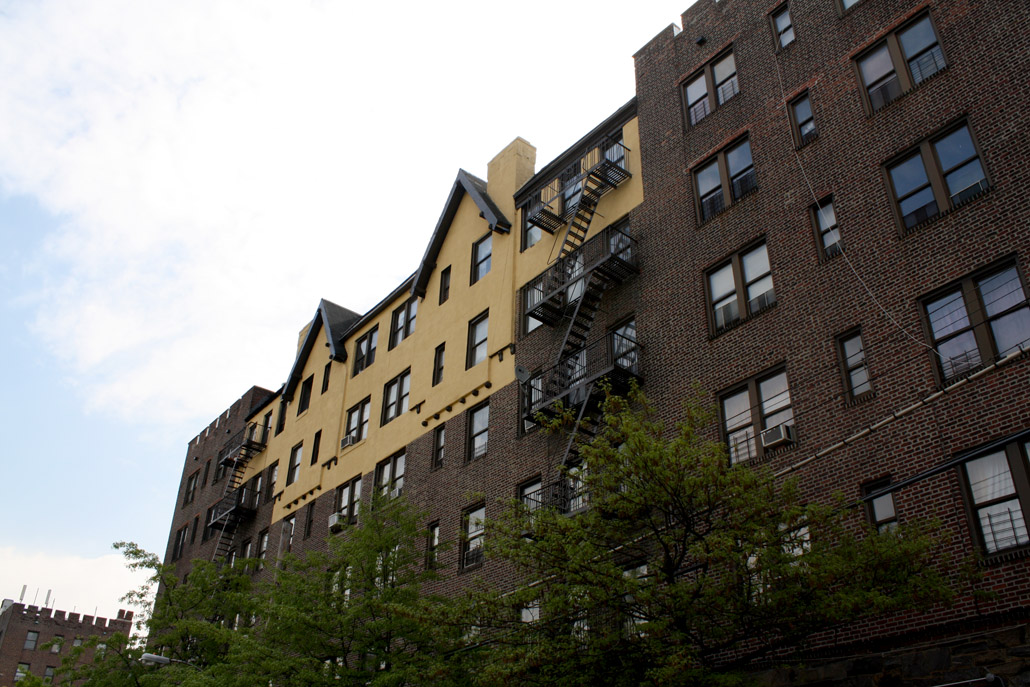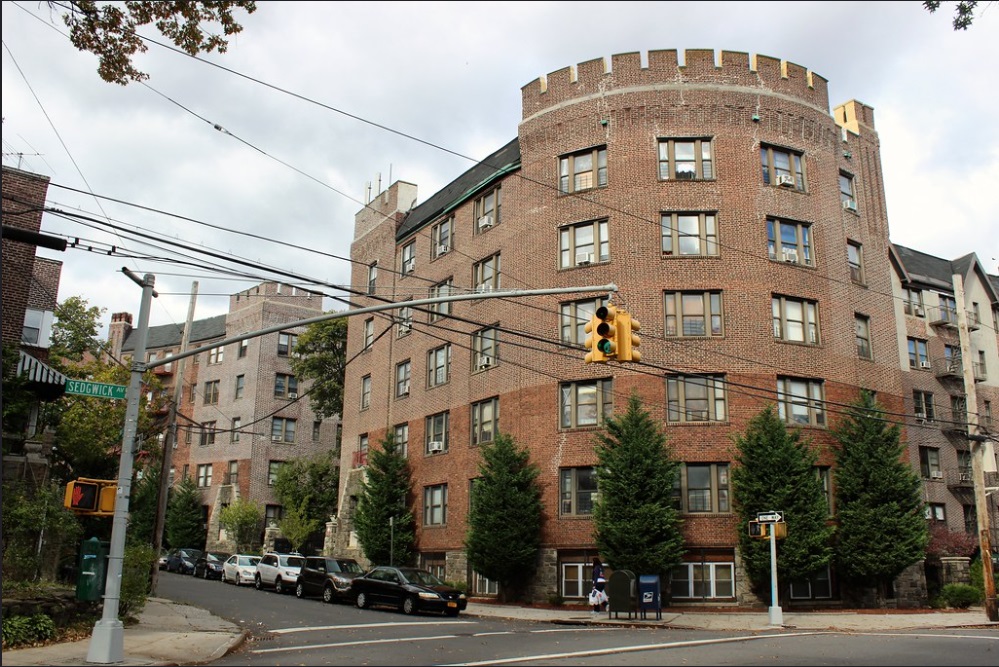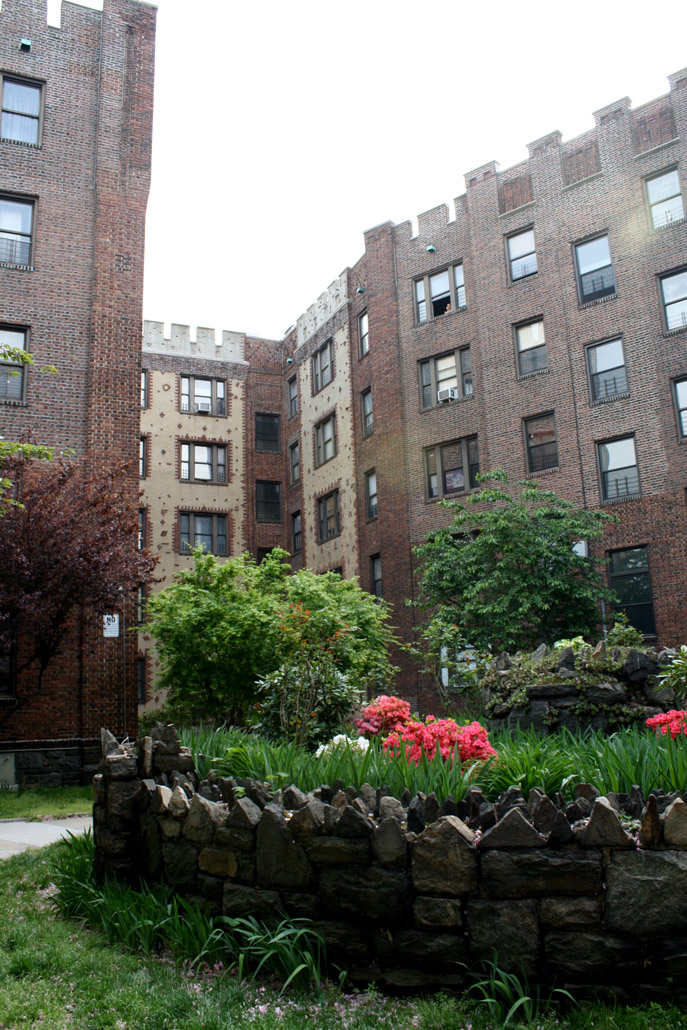Nearly 100 years ago, nearly 500,000 Jews who lived in poverty in the Lower East Side of Manhattan and worked in the garment industry in deplorable conditions, decided that they had had enough. Those Jews had emigrated to America to flee from antisemitism in Europe, and now they were forced to flee again. This time they fled from the neglect and filth of the Lower East Side, but their destination was not very far away. They moved uptown to the northeastern part of New York City, to the Bronx, where they sought to establish a neighborhood of inhabitable houses and build a new life for themselves.
In the 1920’s, a number of cooperative housing complexes (known as Coops) began to be built in the Bronx, which provided housing to secular Jewish workers with socialist leanings. Those Coops, which were located in Van Cortlandt Village in the Kingsbridge section of the Bronx, housed Jews who were classified by their ideology. The Garment Workers Union, the communists, the socialists, the Zionists – all of them built Coops south of Van Cortlandt Park – the third largest public park in New York City. The housing complexes were built on mounds, which had previously been used primarily for agriculture.
The idea was to find a comfortable, safe and affordable housing solution for low-income Jews, without venturing too far from Manhattan where they worked. However, the construction of the housing units also had an ideological component. The dream was to establish a just and close-knit socialist community. Each Coop that was built in the second half of the 1920’s in the Bronx subscribed to a somewhat different ideology and represented a movement or faction in the Jewish left. It appears that Sholem Aleichem Cooperative Houses were the most interesting and colorful of all of them.

The Sholem Aleichem Cooperative (a.k.a. the Yiddish Cooperative Heimgesellschaft) was behind the construction of the complex that bore its name. It was an initiative of a small group of people affiliated with the Workmen’s Circle – Der Arbeter Ring, which was a left-wing Jewish organization dedicated to advancing social and economic justice and preserving the Yiddish language and secular Ashkenazi culture. The Workmen’s Circle was founded in New York in 1900 by two tailors from Eastern Europe, who like two million other Jews had fled from the pogroms in Europe at the end of the 19th century and emigrated to the United States. The purpose of the Workmen’s Circle was to provide mutual aid to Jewish workers in the United States. They offered different kinds of insurance, extended assistance to the unemployed, supported social events and education, and more. The organization gradually spread to other parts of the United States and amassed quite a bit of power.
The Workmen’s Circle gave rise to the Sholem Aleichem Cooperative Houses, whose aim was to provide housing to Yiddish-speaking artists and intellectuals who found themselves working in the garment industry or in other kinds of manual labor in New York. It was only natural that they would adopt the name of the greatest Yiddish author of all time, who had also emigrated to the United States from the Russian Empire in wake of the pogroms. Sholem Aleichem died in his apartment in the Bronx in 1916 and was buried in Queens, New York.
Unlike other cooperative housing complexes in the area, Sholem Aleichem Houses did not receive a government subsidy, but was funded by money raised by its members. The construction of the Houses took a year. The complex was designed by the architecture firm of Springsteen & Goldhammer in a Neo-Tudor style, which clearly did not convey a sense of socialism, but was popular nonetheless. The fifteen, five-story red brick buildings, arranged like a fortress with a beautifully landscaped inner courtyard, were occupied starting in 1927. The complex was comprised of 229 apartments situated on a hill overlooking the Jerome Park Reservoir.

The Sholem Aleichem Houses complex had less of a political agenda than that of the other Coops. Rather, it concentrated on issues such as social services, education, and above all – culture. “Sholem Aleichem always seemed to be the most idealistic, even though all were obviously, for the fact that its main driver was cultural.” That’s how the architect and historian, Richard Plunz, described the complex in an interview with the New York Times. Sholem Aleichem Houses were established as a utopian socialist community that differentiated itself politically and culturally from the American society that surrounded it. And for a certain period of time, it did in fact appear that utopia was working.
The complex had a school, kindergarten, grocery stores that sold goods at a discount, a cafeteria where events were held, studio spaces for artists, and an auditorium used for lectures, concerts and plays. Over the years, disputes emerged at Sholem Aleichem Houses between the socialist faction and the communist faction – so much so that two Jewish schools operated there, one for each group. But those who lived there in the good years have described an enriching and inspiring artistic and intellectual atmosphere, and children who were born and raised in the Houses remember having a happy childhood.
In a filmed interview she gave to the Yiddish Book Center, Yvette Marrin, the daughter of the Yiddish writers Malka Lee (who was a popular Yiddish poet among Yiddish readers in the United States) and Aaron Rappoport, said that it was great growing up there. Marrin, who was born in the Bronx in 1937, describes an idyllic childhood and a sense of a loving and close-knit community. “They dreamt that Sholem Aleichem Houses would be a place where Jews, writers and artists can get together and freely create. And for a while, it seemed that way,” she said. “I used to go down to the basement and watch Goodelman sculpt” – referring to the sculptor, Aaron J. Goodelman. “And he never minded that I came in. And they never locked me out because I was quiet. It was wonderful watching him create a sculpture. He did all the covers for my mother’s books, or most of them.”
“Growing up in Sholem Aleichem Houses was probably the best experience I could ever recommend to anybody anywhere. It’s like growing up in a commune or it could be a kibbutz. Everyone took care of you, and you took care of yourself, but in a way that was fun. It wasn’t lonely. If you wanted someone to talk to, you knocked on somebody’s door and they let you in, and there you were. If it was dinnertime… you had dinner with them. Or if you wanted to play their piano, they let you…I can’t even think of a better place to grow up anywhere.”
In addition to Goodelman, other famous tenants lived there, such as the expressionist artist, Abraham A. Manievich, and the first Jewish Miss America, Bess Meyerson. The above-cited article in the New York Times also mentioned that Marc Chagall stayed at Sholem Aleichem Houses for a few months after fleeing from France when the Nazis invaded.
Even though the economic situation in the first years of Sholem Aleichem Houses was far from good, the culture and community life were in full bloom. The Great Depression started two years after the first tenants moved in. According to A History of Housing in New York City, a book published by Richard Plunz, the complex passed into receivership of the bank in 1929. By 1931, it had been sold to a private landlord who rented the apartments to the members of the cooperative.
Based on their lease with the landlord, if any of the tenants was unemployed and unable to pay his rent, all the other tenants undertook to pay half of his rent, with the remainder considered a debt until he found work. Despite that commitment, the property owner began evicting quite a few tenants. The other tenants went on a rent strike, and some of them also received eviction notices. The members protested and demonstrated, and appealed to the court claiming that the landlord could not evict tenants due to the cooperative nature of the buildings. In the end, they reached an agreement – the evicted tenants got their apartments back, and a fund was set up to pay for the unemployed tenants.
The peace between the tenants and the landlord lasted until 1949, when the ownership of the complex changed hands again. The first half of the 1950’s was a very difficult period for the cooperative. The ideologically-driven founders were getting on in years, and the persecution of communists in the United States became widespread, led by Senator Joseph McCarthy. The utopia came to an end.

According to Plunz, many members of the second generation of Sholem Aleichem Houses replaced the Yiddish socialist dream with the American dream. They left the small community in the Bronx for the suburbs, where the promise of 1950’s prosperity and a more modern lifestyle was ostensibly waiting for them. Many of them were sick of their parents’ voluntary segregation and wanted to integrate into the American mainstream.
Those who did not have the means to move to the suburbs chose to move to a different cooperative housing complex. The Bronx was full of them, but the other cooperatives did not offer their tenants any cultural content. It seems that there, too, the ideology had died a long time ago.
The cultural institutions at Sholem Aleichem Houses shut down, one after another, and all that remained were the buildings themselves. The Women’s Club was the last to go, which closed its doors in 1979. But the old complex of buildings is still intact and the inner courtyards are once again well groomed. In 2013, the buildings were bought by new owners, who kept the name Sholem Aleichem Houses. They are trying to restore the glory of the place – not necessarily in the Jewish-socialist context – but rather as a complex that offers its tenants high standard housing. At present, the complex is populated by workers from different ethnic backgrounds. The Yiddish utopia vanished a long time ago and the character of the place has changed. But it appears that the new tenants of Sholem Aleichem Houses also enjoy an affordable and good quality of life, not far from the Big Apple.